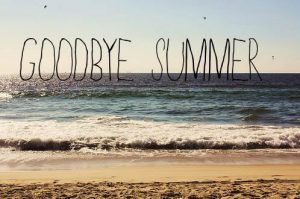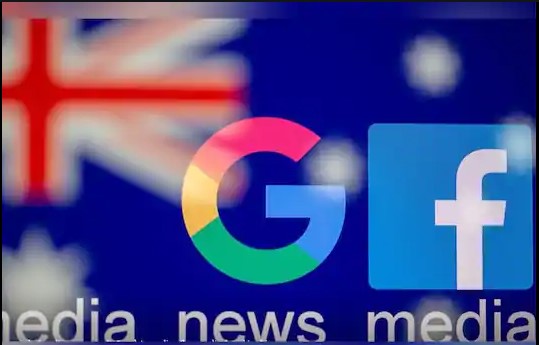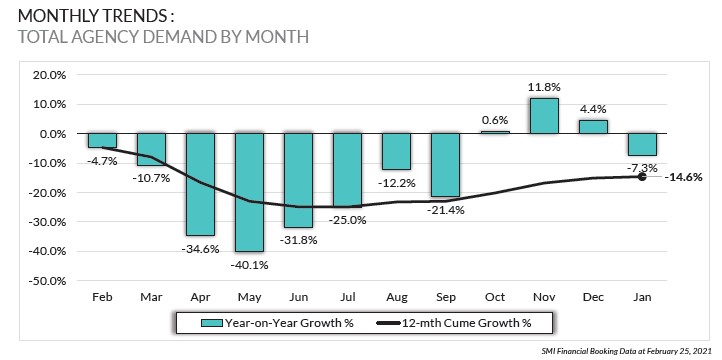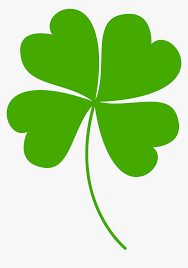
GOODBYE SUMMER, HELLO $$$

With Summer coming to an end it got us thinking about how the seasons affect the advertising markets. Everyone concentrates on the quarters of the financial year (understandably) but we thought it could be interesting to analyse the media by season. What effect does Summer, Winter, etc have on advertising spend, media consumption and opportunities for clients?
The financial controllers at agencies and media companies ought to feel happy to see the back of Summer. Without doubt, Summer is the worst season for advertising expenditure. On average, over the past 8 years, the advertising spend in Summer has been at least half a billion dollars less than each of the other seasons. Winter usually has 40% more advertising spend than Summer while Autumn and Spring have around 20-25% more.
In terms of media consumption, the seasons, along with school holidays, have varying effects on the media. Magazine sales peak in Summer as people have time off to relax and enjoy their favourite magazines. While for Television, the Summer ratings are around 10% lower than other seasons and peak in the winter months. Without the Tennis and Cricket the ratings would probably be lower. The way Radio is surveyed, with 8 surveys rolling into one another, makes it difficult to determine listening by season. However, the Radio stars invariably take Summer off and less people travel to work suggesting it is reasonable to assume Breakfast and Drive sessions have their lowest ratings in Summer. Newspaper readership and Digital consumption is relatively consistent across all the seasons. Summer’s longer daylight hours and warmer weather gives Outdoor a 5-10% lift in media consumption compared to other seasons while Cinema consumption peaks by 40% around school holidays. Summer is again Cinema’s highest season with Boxing Day doubling their usual audience.
As Summer has the lowest advertising spend, and therefore demand, it delivers the greatest opportunities for advertisers. A huge opportunity is the ability to boost Share Of Voice substantially and take market share from competitors that leave the market momentarily. In most media the rates are reduced well beyond any audience decrease to entice spend. Simply put, Summer usually represents the lowest cost to reach one thousand people in virtually all targets. So it is with mixed feelings that we say goodbye to Summer. We know more advertising dollars will be spent in Autumn but also know the deals won’t be as good in the following seasons.
WHAT’S NEW IN MEDIA – QR CODE COMEBACK

QR code stands for Quick Response code and was first designed in 1994 for the automotive industry in Japan. We all thought the QR code was long gone especially as we had to download a specific app to use it. However the combination of technology advancements and Covid has given the QR code a new lease of life. In 2017, Apple’s update allowed QR codes to be scanned directly through the camera app and now the latest Android smartphones have made QR scanning a native feature. With thanks to Covid, we now constantly use a QR code every time we enter a shop, restaurant or government business. It is second nature.
We are now seeing QR codes used in advertising once again. Using today’s papers as a guide, around 20% of ads have a QR code. The Outdoor companies are also seeing a lot more demand for it on their street furniture.
A QR Code can be linked to an image, video, landing page, and websites for various purposes. Although they are predominantly black and white, QR Codes can be customized to change background colours and add a logo.
DIGITAL – LET’S MAKE A DEAL!

A lot has been written about the squabble between the Australian Government vs Google / Facebook however things do seem to be moving in the right direction.
Google have been proactive before the governments bill is passed and have struck deals with multiple publishers. Most notably with Seven West Media announced to be worth $30 Million as well as Nine reported to be worth $30 million, this has yet to be formally confirmed by the publisher. ABC has also been included with the code, but the amount is yet to be disclosed. More details of the deals will be released after they are finalised within 30 days. Although the total cash amount of these deals hasn’t been disclosed to the public, Google has set aside $1 billion dollars for worldwide deals over the next 3 years. In addition to the major news organisations, Google have also struck deals with the leading regional and independent publishers under their “News Showcase” tab on the Google News app.
After a clumsy reaction to the bill, Facebook has now stated that letters of intent have been signed with 3 independent news organisations Private Media, Schwartz Media and Solstice media. It will be interesting to see if Facebook add a news tab to their site, similar to marketplace.
There are a few theories as to why the Government is introducing the bill such as protecting the traditional news companies or reducing the power of the tech giants. Whatever the reason, it is interestingly reported that for every $100 million of online advertising, $53 million goes to Google, $28 million to Facebook and $19 million to everyone else.
SMI UPDATE – JANUARY 2021

The January SMI figures are the first time in four months we have had a negative YOY result. January advertising spend was -7.3% compared to January 2020. Moving the Australian Open broadcast from January to February is considered a major reason for the decline. The 2020 January figure was back 8.2% compared to Jan’19 which included the Australian Open so all things considered, this January is not such a bad month. The general feeling is advertising spending recovery is continuing.
Government advertising spend was a big contributor to January 2021 and was up 56% while Home Furnishings was up 30%. Domestic Banks were down 33% which is probably because they are inundated with customers refinancing their home loans or looking for new loans. Travel was down 55% and Auto was down 17%.
The biggest news from the January spend is that it was the first time Digital achieved the highest spend of all media and was up 1.8% YOY. It pushed TV off the podium by a few million dollars. TV was down (-2.6%). Radio had a comparatively reasonable month of late only being down -4.6%. Outdoor was -24.6%, Newspapers -33.5%, Magazines -47.8% and Cinema -66.7%. The Regional TV and Regional Radio sectors performed well and grew ad spend by 3.3% and 9.3% respectively. While Retail Outdoor led the Outdoor recovery with a 21.3% lift in ad revenue.
FAST FACTS

- St Patrick was born in Great Britain and originally the colour was blue
- Television in Australia started in 1956 (B&W), colour TV came in 1975
- Something beneficial from Covid, crime in Australia is down 5% YOY (ABS)
- The oldest verified person lived to 122 years, 164 days – a French woman
- It is estimated 1.2 million feral camels live in the middle of Australia
- Perhaps because Australia is the driest inhabited continent on Earth
